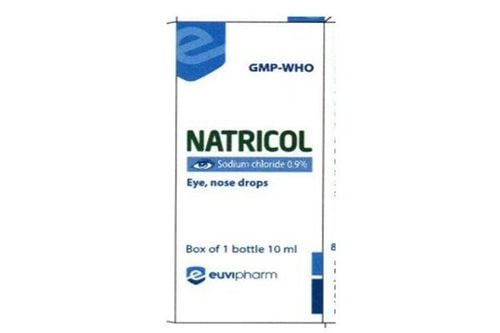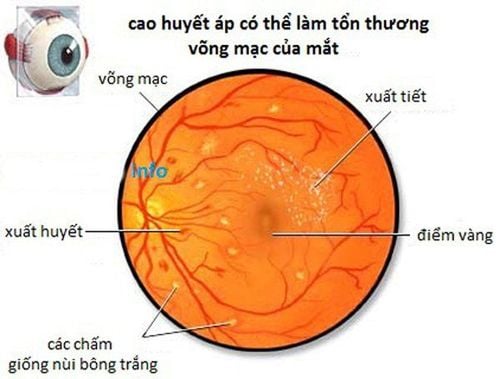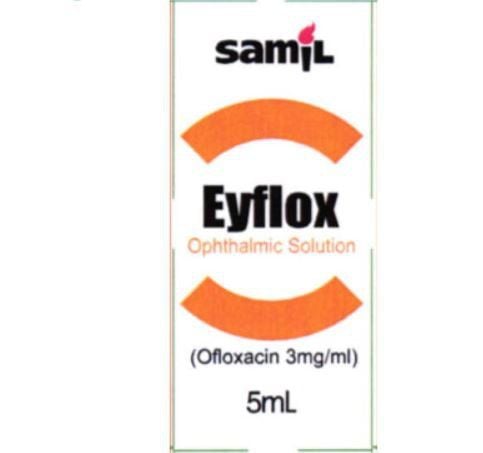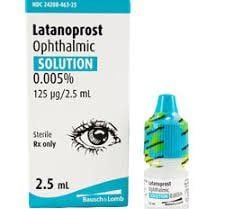This is an automatically translated article.
The article is professionally consulted by Specialist Doctor II Nguyen Thai Hung - Ophthalmologist - Department of Medical Examination & Internal Medicine - Vinmec Danang International General HospitalBlepharospasm is a type of focal dystonia in which there is involuntary contraction of the muscles of the eyelids causing involuntary closure of the eyelids. This does not have any effect on vision, but sometimes causes discomfort and impairs quality of life. Therefore, the problem of treating eyelid muscle spasms needs to be addressed early, before the spasms become so excessive that they force the eyelids to close.
1. Overview of eyelid muscle spasm treatment
Eyelid muscle spasms are a chronic, often progressive condition. Although there is currently no cure that is completely effective, patients still have treatment options for temporary remission.However, because eyelid muscle spasms often progress despite treatment, patients can become less compliant, sometimes falling victim to unorthodox methods.
The most effective blepharospasm treatment of today's conventional treatments includes: oral medication, botulinum toxin injection, and surgical intervention. Other nonspecific blepharospasm treatments that have also been shown to be effective are: faith healing, herbal therapies, hypnosis, and acupuncture.
1.1 Drugs to treat eyelid muscle spasms Drug therapy only works to improve symptoms. Historically, a variety of drugs have been used to treat blepharospasm, partly because blepharospasm was initially considered a manifestation of mental illness and partly because no single drug was available. clearly more effective.
Most patients respond incompletely and drugs used to treat eyelid spasms are expected to only partially restore eye function to the patient. Meanwhile, patients respond differently to each drug and also different in each situation without any way of predicting.
Of the classes of drugs used, tricyclic antidepressants do not directly relieve eyelid spasms but are useful if depression is exacerbating symptoms. The drugs with the highest favorable response rates among patients included lorazepam (67%), clonazepam (42%) and Artane (41%).
In addition, different classes of drugs have also demonstrated some efficacy in eyelid spasms, mainly based on the following three pharmacological hypotheses: (1) cholinergic excess, (2) decreased GABA function and (3) dopamine excess. Even so, drug therapy for blepharospasm is still considered less effective than botulinum toxin injection, and is therefore only used as a second-line treatment for responsive eyelid spasms. poorly with botulinum toxin, such as eyelid spasms accompanied by spasms between the face and lower face.

The principle of this method is to interfere with the release of acetylcholine (ACh) from nerve endings, causing temporary paralysis of the muscles involved. Botulinum toxin A is a product of the bacterium, Clostridium botulinum (a large, gram-positive, rod-shaped anaerobic organism). Two of the commercially available botulinum A preparations include onabotulinumtoxinA (Botox) and incobotulinumtoxinA (Xeomin). AbobotulinumtoxinA (Dysport) may also be equally effective.
Once injected, botulinum toxin binds rapidly and reliably to receptor sites on cholinergic nerve endings in a saturable fashion. Accordingly, muscle paralysis is the result of inhibition of ACh release from nerve endings. Botulinum toxin binds to ACh-containing vesicles at nerve endings and prevents calcium-dependent exocytosis.
The numbing effect is dose related, with peak effect 5-7 days after injection. Patients typically reported onset of remission 2.5 days after injection with a median duration of symptom remission of 3 months. More than 5% of patients treated for continuous eyelid spasm remission for more than 6 months, although some patients still need booster injections as often as monthly. The injected muscles take about 6-9 months to recover from the effects of botulinum toxin, and sometimes, the muscles do not fully return to their pre-injection level of function.
Complications of botulinum toxin injections to treat eyelid muscle spasms include eyelid paralysis (7-11%), corneal opening (5-12%), and dry eye symptoms (7.5%) , entropion, red skin, myopia, photophobia (2.5%), double vision (<1%), ecchymosis and weakness or paralysis of facial muscles.
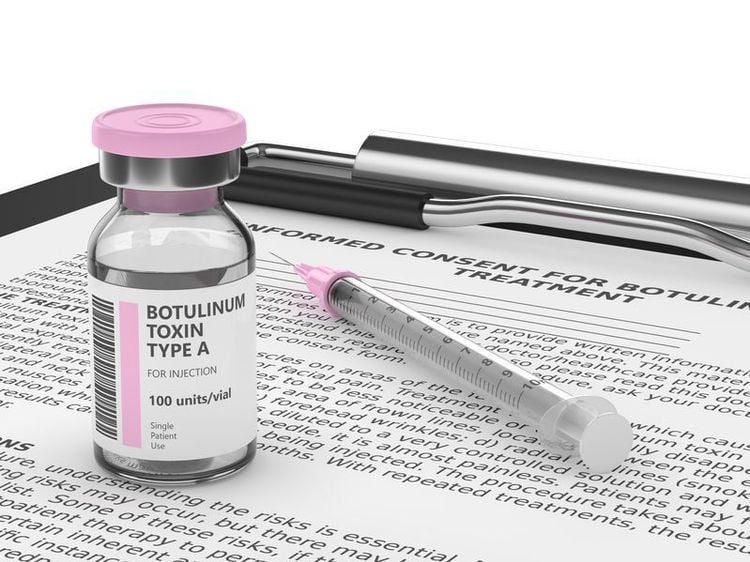
1.3 Surgical intervention In patients with eyelid muscle spasms that do not improve with drug therapy and botulinum toxin injections, surgical intervention may be considered. The main surgical treatment for blepharospasm is myomectomy.
The previous type of procedure, nerve ablation, was almost completely abandoned because of the high complication rate. Subjects indicated for blepharospasm surgery may have failed botulinum toxin therapy because of eyelid misalignment, cosmetic concerns, inability to open eyelids, or persistent muscle weakness. These conditions require surgery in addition to or as an alternative to myomectomy.
Restrictive myotomy in the treatment of blepharospasm includes surgical removal of the corners of the eyelids, including the anterior, periorbital portions of the eyeball, or the upper and lower ocular muscles of the eyelids.
Eyelid surgery is a staged procedure with upper eyelid surgery usually performed first, followed by lower eyelid surgery if symptoms persist. Avoid simultaneous removal of the upper and lower eyelids as this often leads to complications of chronic lymphedema.
In summary, blepharospasm is diagnosed based on physical examination and is easily treated with medication, botulinum toxin injection, or surgery. All current methods are of value in symptomatic treatment and have a high probability of recurrence. However, Botox is considered a very safe and effective way to treat eyelid spasms, which can be life-changing for patients, especially those who have been undiagnosed for a while. However, patients still need long-term follow-up care and repeated treatment when necessary.
Eye specialties at Vinmec International General Hospital are the leading medical facilities in the country in the examination and treatment of eye-related diseases, with comprehensive quality in both expertise and medical services.
Eye specialist at Vinmec has comprehensive vision and eye health care functions for children, adults and the elderly including: refractive error check, laser treatment and surgery. In addition, the department also has the task of coordinating with other clinical departments in the treatment of pathological complications and eye injuries caused by accidents.
Besides, the team of Ophthalmologists here are experienced doctors who have implemented many types of surgery from routine to difficult surgeries, especially techniques that require aesthetics. . With enthusiasm and love for the profession, the team of doctors working at Vinmec always gives customers the best services with the highest service quality.
Please dial HOTLINE for more information or register for an appointment HERE. Download MyVinmec app to make appointments faster and to manage your bookings easily.





